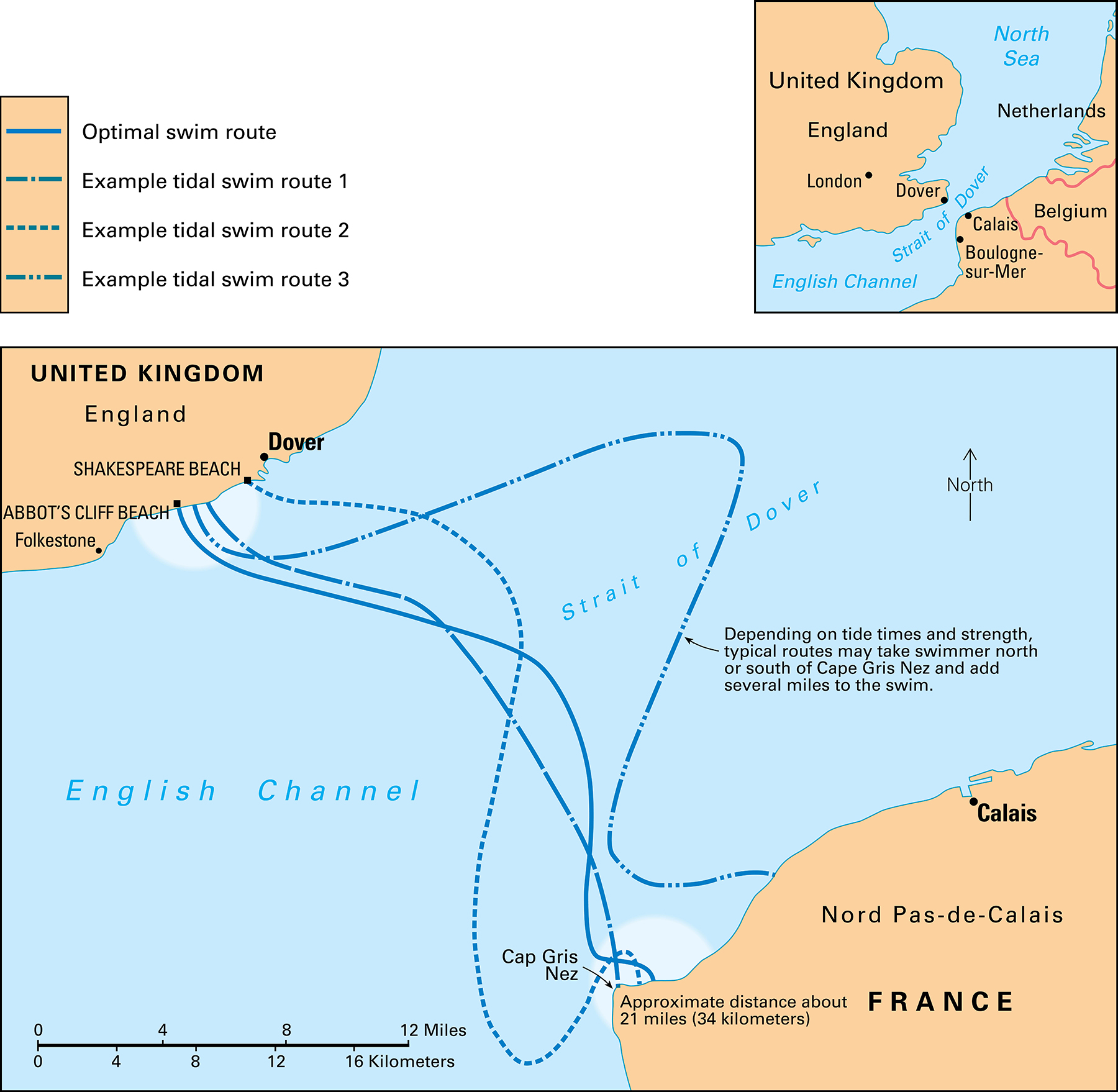English Channel swimming is a popular and demanding event in long-distance swimming. Every year, from July to September, dozens of men and women attempt to swim the English Channel, which separates the east coast of England from the west coast of France. A channel swim typically covers about 21 miles (34 kilometers) between Dover in southeast England and Cap Gris Nez near Calais, France. However, changing tides may extend the distance by several miles.

Since 1927, the Channel Swimming Association (CSA), a British organization, has regulated English Channel swimming. A swimmer must register with the CSA before attempting a sanctioned crossing and must agree to follow CSA rules. Since 2003, the Channel Swimming and Piloting Federation (CS&PF) has had permission from the English and French governments to also oversee attempts to swim the English Channel. However, the Channel Swimming Association does not recognize records set under the oversight of the CS&PF.
Because channel swimming is internationally popular, swimmers must book ahead one or two years to reserve a time to attempt a crossing. In addition, each swimmer must pay the cost of hiring a registered pilot and escort boat to accompany him or her and to monitor the swimmer’s safety in the water. All swimmers must be at least 16 years old.
A swimmer may start from either country. The swimmer must enter the water from the shore of the departing coast and finish on dry land on the other side. The swimmer must not be assisted by any artificial aid. Goggles are permitted, as well as a cap, earplugs, and one bathing suit that must be sleeveless and legless.
Swimmers are not allowed to touch another human being while in the water. Food and water must be passed by a long pole from the escort boat. The temperature of the water in the Channel ranges from 57 to 64 degrees Fahrenheit (14 to 18 degrees Celsius) during the July-September season. Swimmers are required to complete a six-hour swim in similar temperatures before attempting a crossing. Swimmers are allowed to use grease on their bodies as insulation against the cold water.
The first person to successfully swim the channel was Matthew Webb of England in 1875. The record for the fastest swim is 6 hours and 55 minutes, set by Trent Grimsey of Australia in 2012, piloted under CS&PF. Perhaps the most famous channel swimmer is Gertrude Ederle of the United States. Ederle was the first woman to swim the channel. At the age of 19 in 1926, she swam from France to England in 14 hours and 39 minutes, a women’s record that stood for 35 years. In 1961, Antonio Abertondo of Argentina became the first person to swim the channel both ways. It took 43 hours.
